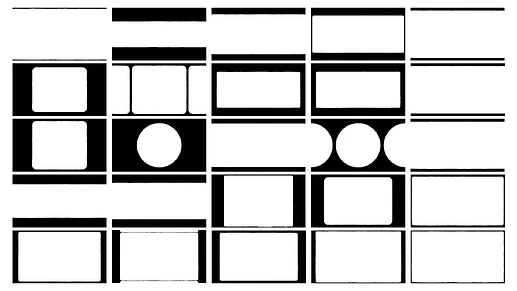What are Letterboxing?
They are those black bars at the top and bottom of your screen while watching movies. They play a significant role in shaping the cinematic experience. Let’s dive into the world of screen letterboxing and uncover its importance across different genres and film styles.
-
Understanding Letterboxing
Letterboxing refers to the technique of displaying a widescreen film or video within a standard aspect ratio. It’s a method used to preserve the original aspect ratio of the content, ensuring that viewers see the film as intended by the director. Instead of cropping the image to fit the screen, letterboxing maintains the full width of the picture while adding black bars above and below.
-
The Impact on Cinematic Experience
Letterboxing isn’t just about aesthetics; it influences how audiences perceive and engage with the content. By preserving the original aspect ratio, letterboxing allows viewers to experience the full scope of the film, capturing intricate details and expansive landscapes that might otherwise be lost in cropping. -
Genre-Specific Usage
Different genres utilise letterboxing in distinct ways to enhance storytelling and evoke specific emotions:
-
Drama and Epic Films: Epic tales and dramatic narratives often employ letterboxing to emphasise grandeur and scale. Think of sweeping landscapes, majestic vistas, and epic battles that benefit from the wider frame, immersing viewers in the vastness of the story world.
The Lord of the Rings: The Two Towers -
Action and Thriller: In action-packed scenes and suspenseful sequences, letterboxing can create a sense of tension and intensity. The narrow frame heightens the focus on the central action, intensifying the adrenaline rush and keeping audiences on the edge of their seats.
Mad Max: Fury Road -
Art-house and Experimental Cinema: Experimental filmmakers often use letterboxing creatively to challenge traditional cinematic conventions. By playing with aspect ratios and framing, they push the boundaries of visual storytelling, inviting viewers to question and interpret the film in unconventional ways.
The Grand Budapest Hotel
-
Cultural and Historical Significance
Beyond its technical function, letterboxing also carries cultural and historical significance. It reflects the evolution of filmmaking technology and the transition from traditional 4:3 aspect ratios to widescreen formats. Understanding the use of letterboxing allows students to appreciate the historical context of cinema and its impact on contemporary filmmaking practices. -
The Future of Letterboxing
As technology continues to evolve, the prevalence of letterboxing may change, with the rise of ultra-wide screens and digital streaming platforms. However, the fundamental principles of preserving aspect ratios and enhancing cinematic experiences will remain timeless, ensuring that letterboxing continues to shape the way we watch and appreciate films.
In conclusion, letterboxing is not merely a technical aspect of filmmaking but a powerful tool for storytelling and visual expression. By understanding its nuances and applications across different genres and film styles, students can deepen their appreciation for the art of cinema and harness its creative potential in their own projects.



